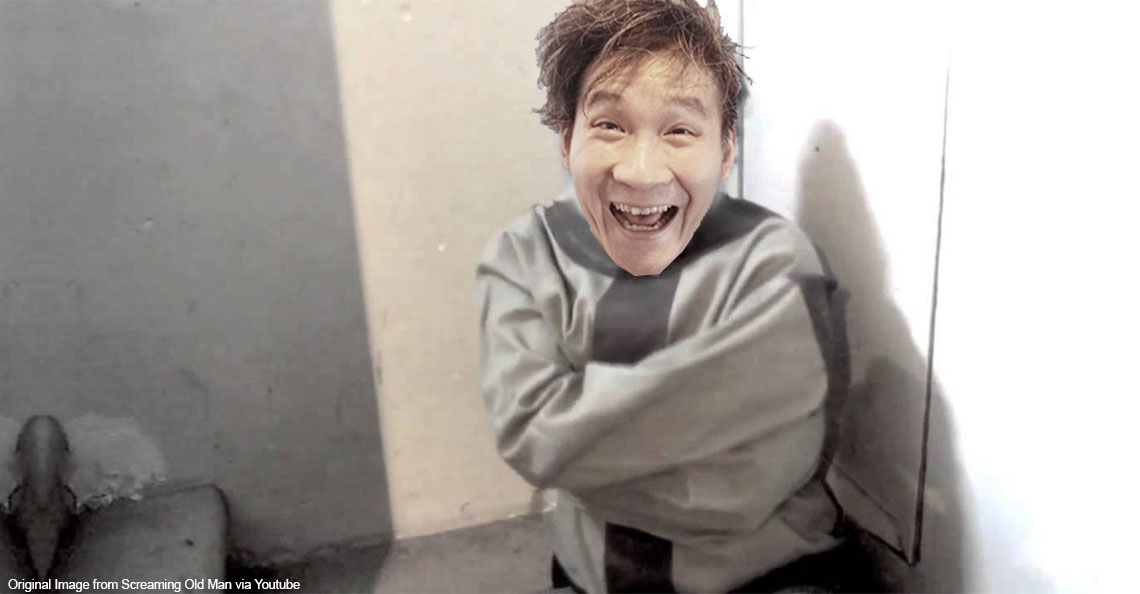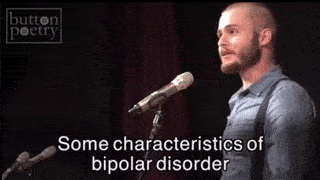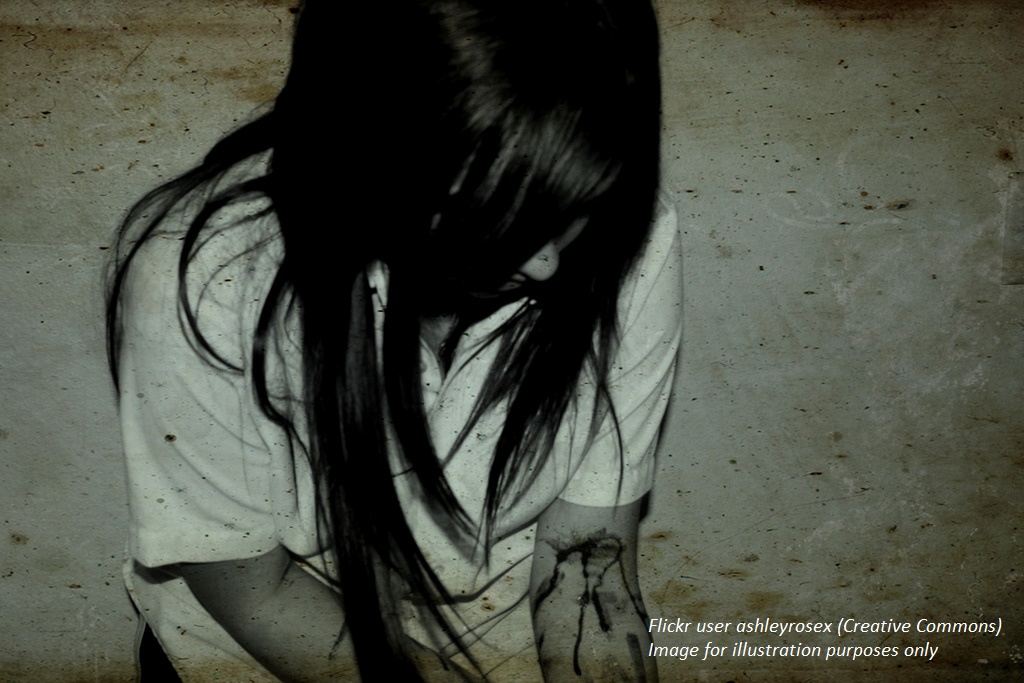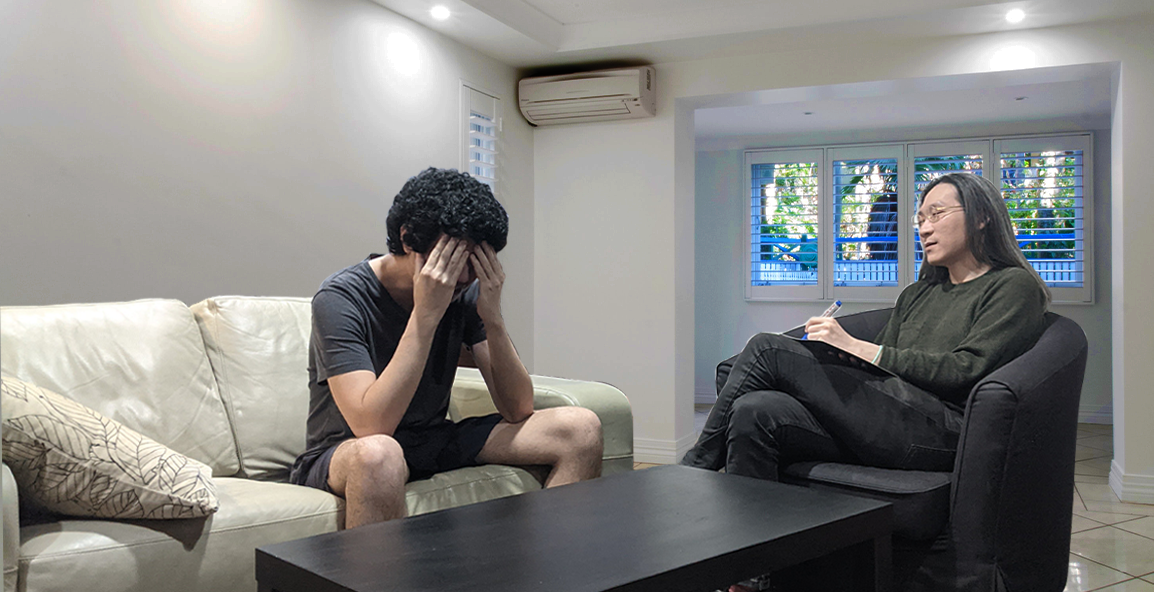Guess what percentage of Malaysians have mental disorders? It’s not as low as you think…

- 1.5KShares
- Facebook1.4K
- Twitter7
- LinkedIn1
- Email25
- WhatsApp36
If you clicked on this article after reading the title, we can assume that you should already have a guesstimated number in your head, so let’s see how correct you are!
Ready?
The answer’s 30%.
According to the 2015 National Health and Morbidity Survey (pg. 187) conducted by the Ministry of Health, 29.2% of Malaysian adults suffer from mental health issues. If you can’t brain percentages, this roughly translates to 3 out of 10 people. What’s interesting here is that this is a rising number – The numbers were 10.6% (1 in 10) in 1996, and 20% (2 out of 10) in 2013.

But if this is the case, why don’t we see crazy people running around in straitjackets and talking to themselves? Well, here’s the worrying bit… We usually associate “mental disorder” or “mental illness” with psychotic disorders – y’know, the Tanjung Rambutan/Hospital Bahagia kinda stuff like Schizophrenia or Dissociative Identity Disorder (aka “split personality”). But these kinds of mental disorders only represent 1% of the Malaysian population.
This is the worrying part because the rest actually consists of conditions such as depression, anxiety disorders, and bipolar disorders – usually categorized as Common Mental Disorders (CMD). Despite the word “common” in the name, CMD is worrying because, unless you’ve studied or been exposed to someone who has it, these are conditions that you can’t see or even know you have. Which is why we’ll be focusing on CMDs (especially depression) for this article.
But before we go into that, we know some of you are probably thinking…
Chup. Is the percentage even correct? I dun believe ಠ_ಠ

Now, even with the explanation above, it can be pretty hard to believe that three people in every Dota game could be battling depression. Furthermore, these numbers are from a survey, meaning that conclusions were drawn based on answers written in a form; not to mention that a person answering it could have just broken up with his girlfriend at the time, leading to more negative answers.
To get a little more insight on this, we spoke to Dr. Chua Sook Ning, a clinical psychologist and founder of Relate, an organization promoting understanding and treatment of mental health illnesses. She tells us that yes, there’s a chance the stats could be inaccurate – the percentage may actually be higher.
“In self-evaluations questioning their mental health, people are more likely to say no than yes so the numbers could be much higher.” – Dr Chua, in phone interview with CILISOS.
 Because it would be very hard and very costly to interview every single Malaysian, researchers use methods that are meant to give the best possible results that represents the entire population; from interviewing randomly-selected participants to using questionnaires that have been proven to be reliable across different countries. In this case, the survey used is the GHQ-12, which is noted to be consistently reliable and used across 38 languages around the world.
Because it would be very hard and very costly to interview every single Malaysian, researchers use methods that are meant to give the best possible results that represents the entire population; from interviewing randomly-selected participants to using questionnaires that have been proven to be reliable across different countries. In this case, the survey used is the GHQ-12, which is noted to be consistently reliable and used across 38 languages around the world.
And now for the last bit… how does a survey take into account how you’re feeling at the time? Well for one thing, the GHQ-12 was designed for this, but Dr. Chua adds that just because you have a reason to be depressed doesn’t mean you’re not ACTUALLY depressed.
“You can say that the depression is the result of your break-up, but that doesn’t make you any less depressed. People like to give reasons for not being in their best state of mental health.” – Dr. Chua
So now that we’ve (hopefully) convinced you that these findings are legit, we asked Dr. Chua why more Malaysians are getting insane in the membrane and she tells us…
City living and modernization is making us more depressed and anxious

So here’s a little Psychology 101 for this topic. Mental health issues can be caused or triggered by the interaction of two major factors – internal ones like genetics and personality traits and external factors like the environment a person lives in. For example, with internal factors, some disorders like Schizophrenia and bipolar disorder can be inherited; while people with a naturally pessimistic outlook on life (depressogenic thinking style) are more likely to become clinically depressive and may not even realize it –
“People with depressogenic thinking styles get used to feeling so low that it’s normal. They forget what happiness feels like.” – Dr. Chua.
But what’s more interesting are the external factors since research has shown that urbanization plays a small but significant role in the rise of mental disorders, and a bigger role in depression. It’s important to clarify that “urbanization” in this sense doesn’t mean “big cities”, but any major change in population or lifestyle that affects the people living in an area. And for many developing Asian countries, this sort of urbanization is happening at a very rapid rate – like what’s happening to Ipoh, for instance.
Dr. Chua says that urbanization brings “higher stress levels and a lack of social support,” which also goes hand-in-hand with income levels and how hard we have to work for our money. In general, people on the lower income scale (in both urban and rural communities) are more prone to financial stress and have less access to professional help or information on mental health, but even the middle classes aren’t spared as well – the constant need to get rich or die tryin’ not only carries its own kind of stress, but also leads to the breakdown of traditional “Asian” family ties.

A very interesting study she shared with us was a long-term look into how China’s rapid economic progression has affected mental health. It found that many working-age adults moved into cities expecting the streets to be paved in gold, only to walk into a boulevard of broken dreams. But they aren’t just the only ones. The risk of children and the elderly developing depression due to neglect have increased as well:
“Loneliness was the most common word these children used to describe their feelings, increasing risk for depression through social isolation. … With China’s mass internal migration, an increasing number of older people now live alone [reporting] higher levels of depression symptoms…” – Quoted from The Chinese Experience of Rapid Modernization: Sociocultural changes, Psychological Consequences?
Unnaturally high rates of suicide among senior citizens have been reported in many Asian countries including South Korea, Singapore, Malaysia, and China, but wanna take a guess what’s the official percentage of Malaysian children with mental disorders? The same 2015 study we mentioned in the beginning (pg 191) found that it was 20% (1 in 5), which is double the 10% found in 2011.
But there’s a mental disorder statistic that’s NOT on the rise…
Unfortunately it isn’t good news, because what hasn’t gone up is the understanding and acceptance of mental disorders. To be fair, there’s been a slight improvement in terms of awareness and education of mental illnesses in Malaysia, but for the most part we are still pretty bad at identifying symptoms and knowing how to help. Even worse, we still haven’t managed to shake off the stigma associated with mental illnesses and seeking professional help, even though the government is already actively working on improving access and treatment.
While there are certain cultural differences, like Malays being more likely to identify depression though emotions (“tekanan emosi”) while Chinese are more likely to identify it as physical symptoms or causes (“Lack of sleep” or “Relationship problem”) for example. But whichever the case, most Malaysians don’t want to admit that they have a mental disorder because they’re still associating them with the Tanjung Rambutan kind and are prone to seeing illnesses like depression and anxiety as a temporary phase, or worse, a sign of weakness when talking about it.
 Dr. Chua tells us that these views are the biggest hurdle in managing Malaysia’s mental health issues, something that she estimates will take 20 -30 years to change. But it’s something we can start now by educating ourselves about it and being mindful of what we say to people with these issues (even if we’re trying to help) by not downplaying their condition by saying stuff like “Aiya, everybody also get depress wan. Who in this world got no problems? I also get depress.” while also ENCOURAGING – not FORCING – them to seek professional help.
Dr. Chua tells us that these views are the biggest hurdle in managing Malaysia’s mental health issues, something that she estimates will take 20 -30 years to change. But it’s something we can start now by educating ourselves about it and being mindful of what we say to people with these issues (even if we’re trying to help) by not downplaying their condition by saying stuff like “Aiya, everybody also get depress wan. Who in this world got no problems? I also get depress.” while also ENCOURAGING – not FORCING – them to seek professional help.
But more importantly, we need to start talking about it more, because it’s no longer a small issue that can be ignored or swept under the carpet:
“It’s not “Us vs. Them” anymore. It’s just “Us”. It can happen to everyone but it’s not a permanent stain. All of us can get help, and it starts by changing our perspectives towards mental illnesses.” – Dr. Chua.
But if you’re tired of reading quotes from Dr. Chua, here’s one from a personal friend of the writer who’s been diagnosed with Bipolar disorder (kinda like a constant cycle of high-energy mania followed by low-energy depression) on how you can help:
“Just be around and listen. One of the most powerful things you can do is to just be around. A common mistake most people make is that they try to offer solutions or tell us that it’s all in our head, but that ends up triggering certain things in our heads that makes it worse.
Despite how good your intentions are to help, it’s really not that easy and most of the time it can come out wrong. So the best thing you can do is to allow us to talk instead.”

There’s one other statistic related to mental diseases that’s been going up which we haven’t mentioned – suicide rates. While no numbers were provided, the Malaysian Mental Health Association has said that suicide rates – especially among urbanites – in Malaysia has been increasing, with many cases due to untreated mental disorders.
With gradually increasing awareness of mental disorders, some Malaysians have shared their stories which can be read on SOSCILI, our sister from another editor. We chose instead to focus on the statistics because, though personal accounts are important too, it’s equally important to point out that numbers can also tell a story.
If you need more information or help, here are some organizations you can contact:
- Relate – Dr. Chua’s organization. You can also send an email directly at [email protected]
- The Befrienders (03-7956 8144 / 03-7956 8145) – If you need someone to talk to anonymously.
- Universiti Malaya Medical Centre (03-7950 2460) – For 24-hour emergencies.
- MENTARI – The government’s ongoing project to improve reach and awareness.
- 1.5KShares
- Facebook1.4K
- Twitter7
- LinkedIn1
- Email25
- WhatsApp36



